30 January 2020
The future of global agriculture
New trends, technology, innovation
Agriculture is one of the industries that has been affected by a significant and far-reaching evolution in recent years, in production, in the techniques and the organisation of work, and the future will be one based on innovation.
If we consider the global demand for food, we can see that it is increasing due to two main factors: an increase in the global population and an improvement in well-being.
The United Nations predicts that the world population in 2050 will be 9.7 billion, exceeding the ten billion mark by 2100 with a total population of 10.8 billion. Likewise, the steady growth in world GDP per capita will continue, driven by the development of new Asian and African economies, with an annual growth which will go from the current 3.4% to 2% by 2060 according to the Organization for Economic Co-operation and Development (OECD).
In addition, there are some closely related trends that also contribute to the evolution of agricultural production: the shrinking rural workforce, the increase in the production of biofuels for energy production and the challenge of sustainable agriculture, which is sensitive to issues such as climate change and energy efficiency.
In a joint report, the OECD and the Food and Agriculture Organization of the United Nations (FAO) try to capture the phenomenon as a whole, analysing the demands of various types of agricultural production by continent. According to the report, the growth in the demand for food will be concentrated in those regions with high population growth: in particular, India, Sub-Saharan Africa, the Middle East and North Africa.
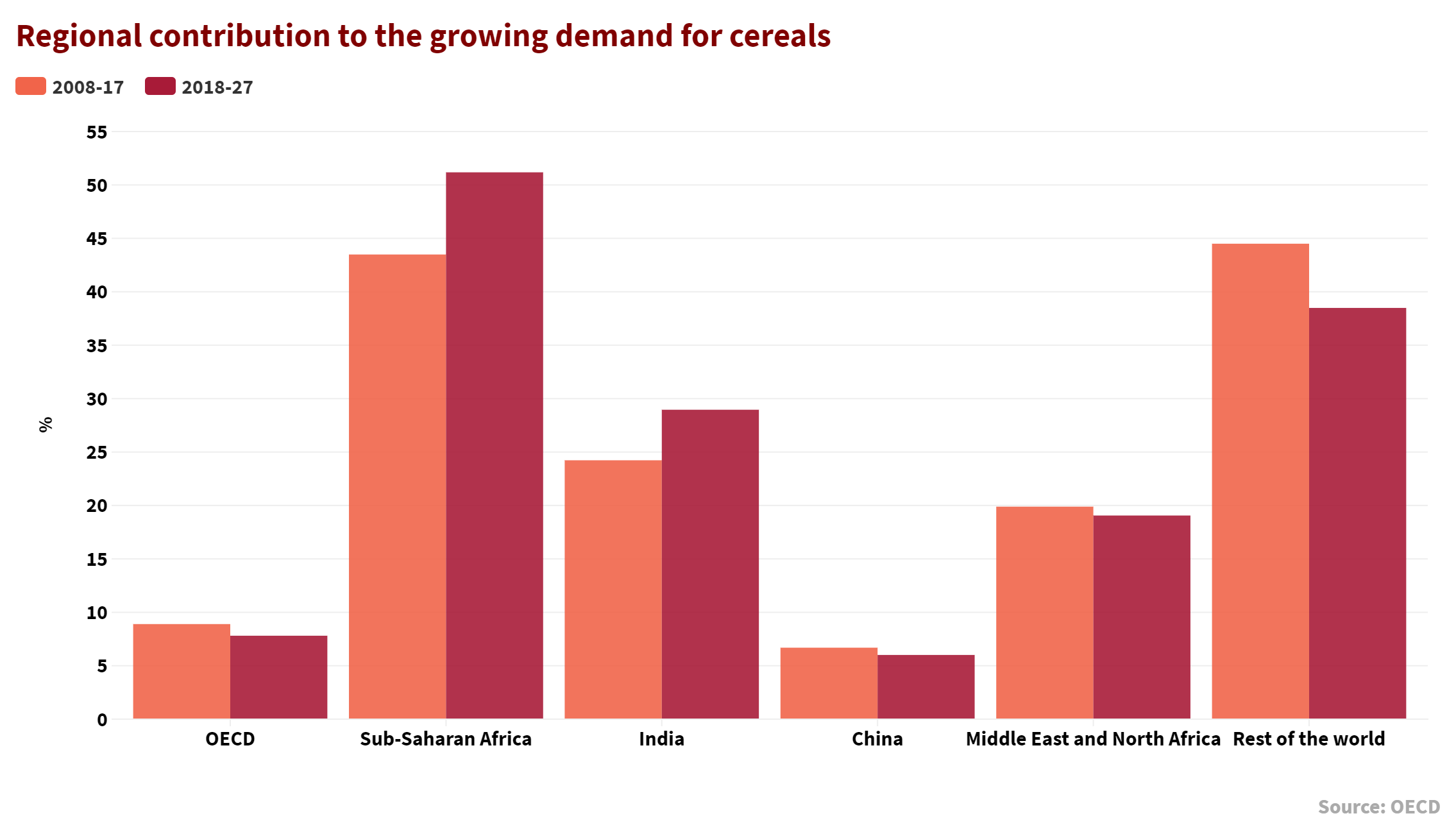
Looking at cereals (rice, corn, wheat), production has exceeded total consumption in recent years, with a build-up of stockpiles and resulting lowering of market prices. The per capita consumption of the most part of cereals has reached saturation levels around the world, but the population growth in Africa and Asia will continue to drive demand.
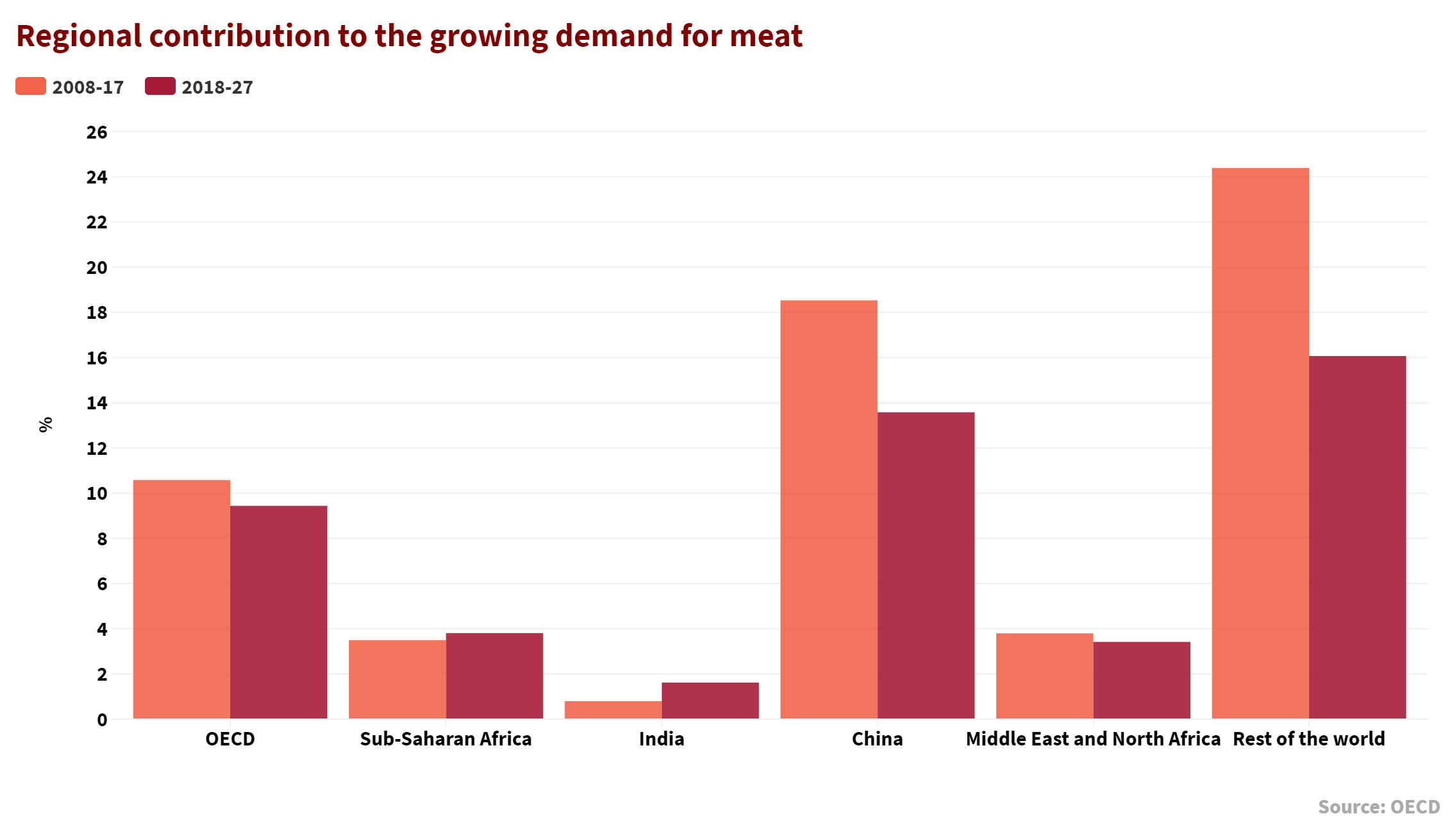
For meat, (beef, pork, poultry), most of the increase in global meat production relates to Australia, the European Union, the United States and Russia and, to a lesser extent, Argentina, India and Mexico, whereas it has reduced in Brazil and China, two of the largest meat producing nations in the world. A slowdown in the global demand for animal protein is predicted, despite the decrease in meat prices in real terms over the medium term. This decrease is the result of a slower growth in meat consumption and the expansion of supply in developed areas of the world.
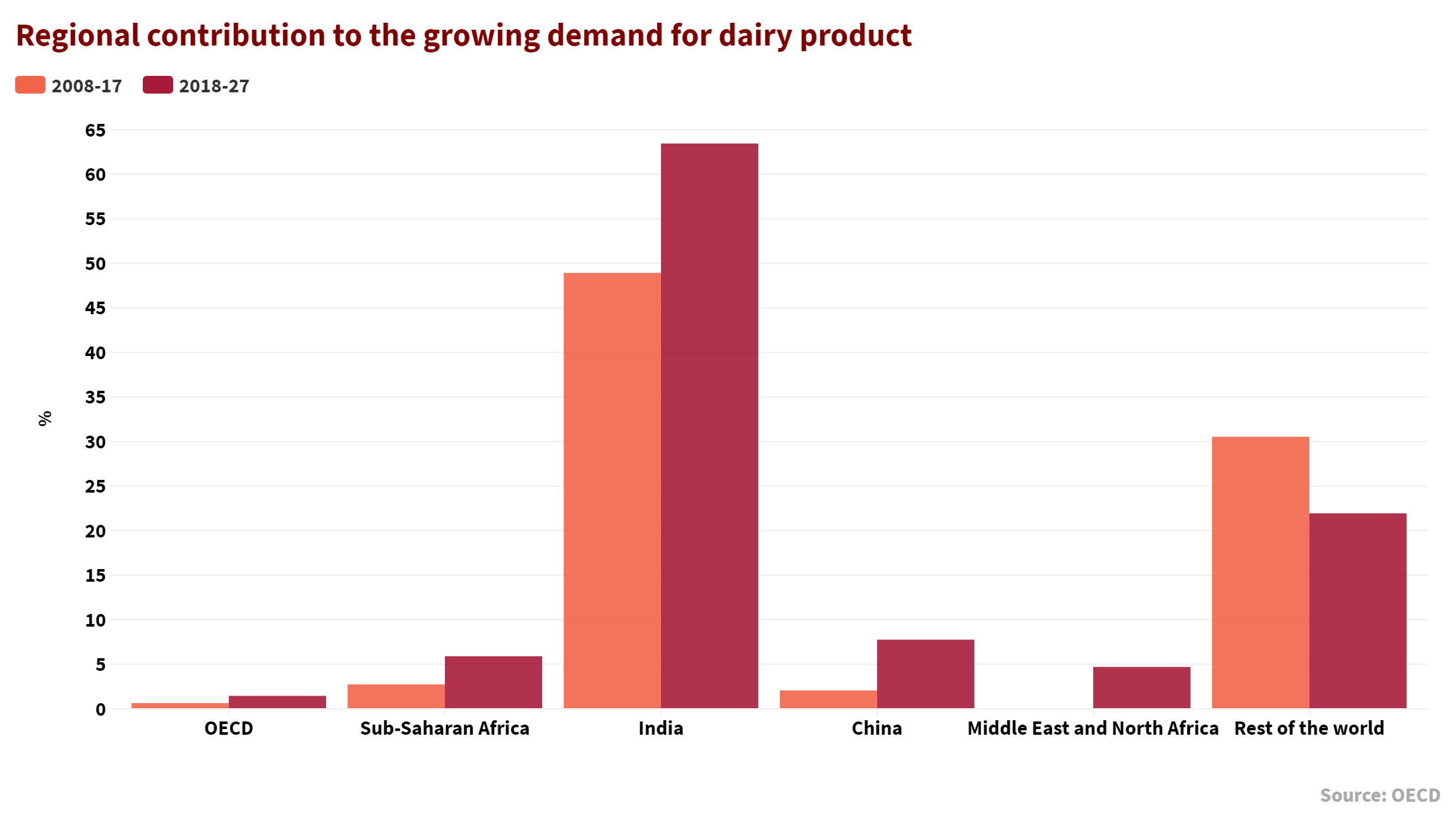
Over the next decade, there is expected to be a significant increase in the share of fresh dairy products in global consumption, in part due to the strong growth in demand in developing countries. Over half the growth in world milk production will be driven by Pakistan and India, which will represent over 30% of global production by 2028.
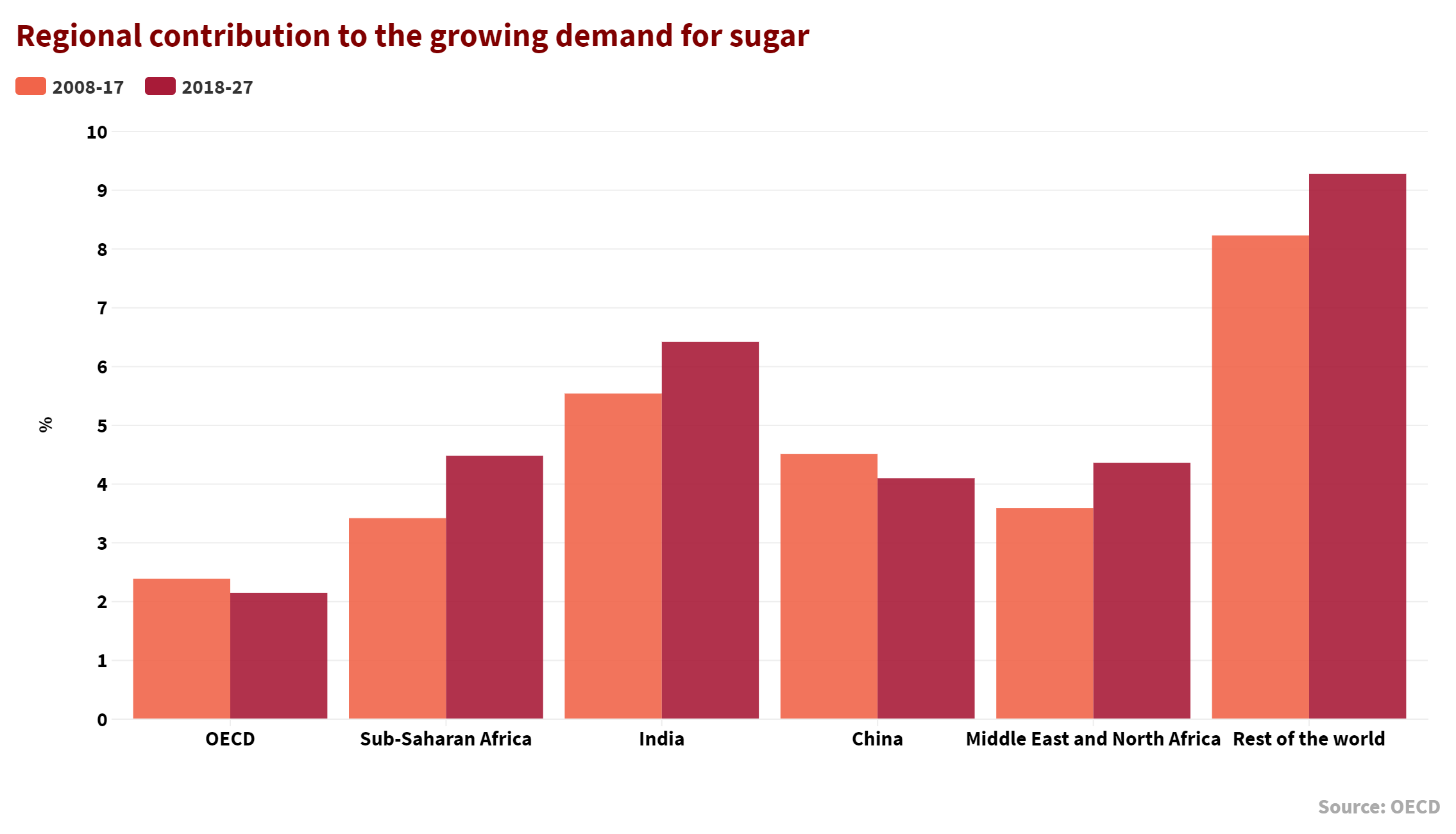
Despite being under the scrutiny of nutritionists for its potential negative health effects caused by excessive consumption, sugar continues to register an increase in demand, above all in many countries where per capita consumption remains relatively low. Despite the current low prices (due to an excess in supply), it is expected that the prices of raw and white sugar will rise over the coming years.
So far, these forecasts have been made in view of the fact that there are still extensive land resources with available agricultural production potential. However, the figures should be considered from a qualitative point of view as well as quantitative. Much of the unused arable land is concentrated in Latin America and Sub-Saharan Africa, but it is not available in other countries where the rural population is currently growing, or much of the potential land is only suitable for certain types of crop which are not currently in high demand on the market.
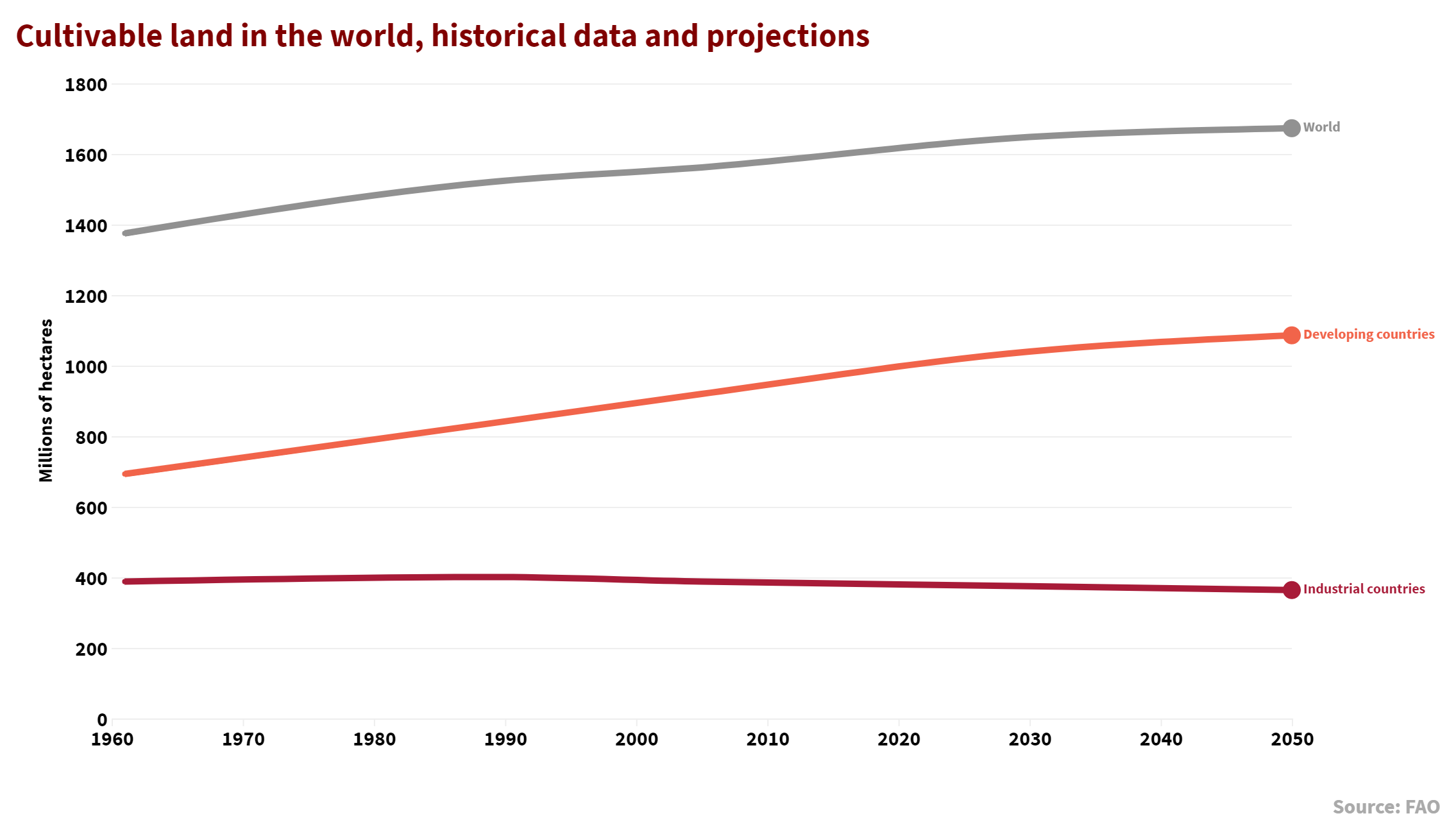.png/lang:en/5-Cultivable_land_in_the_world_historical_data_and_projections@2x_(002).png)

